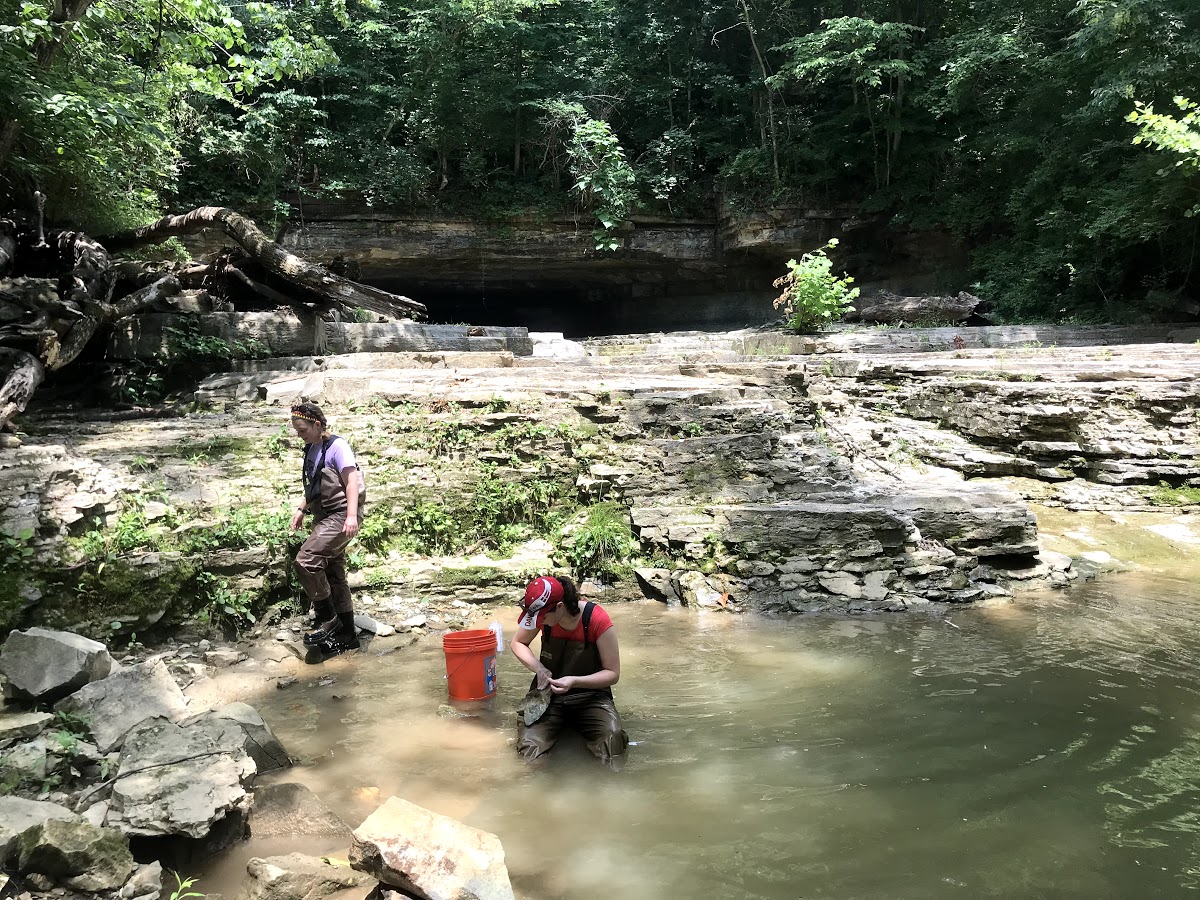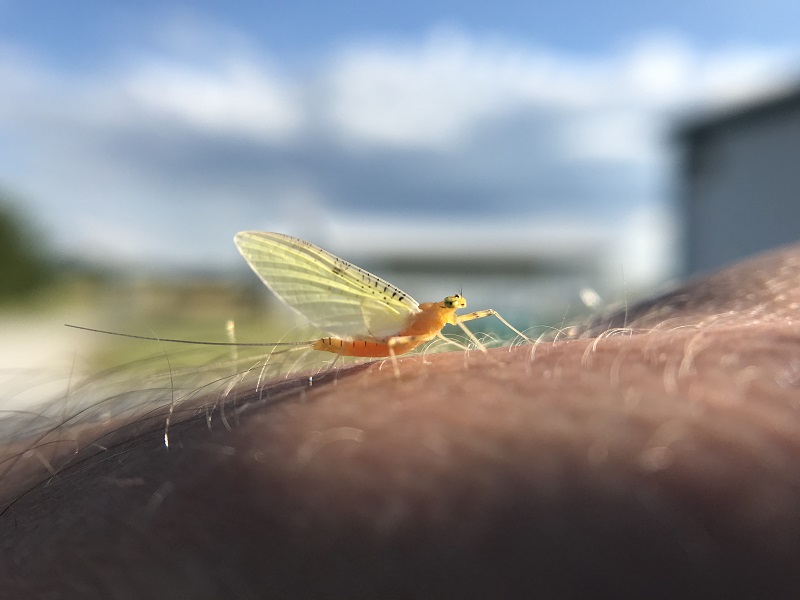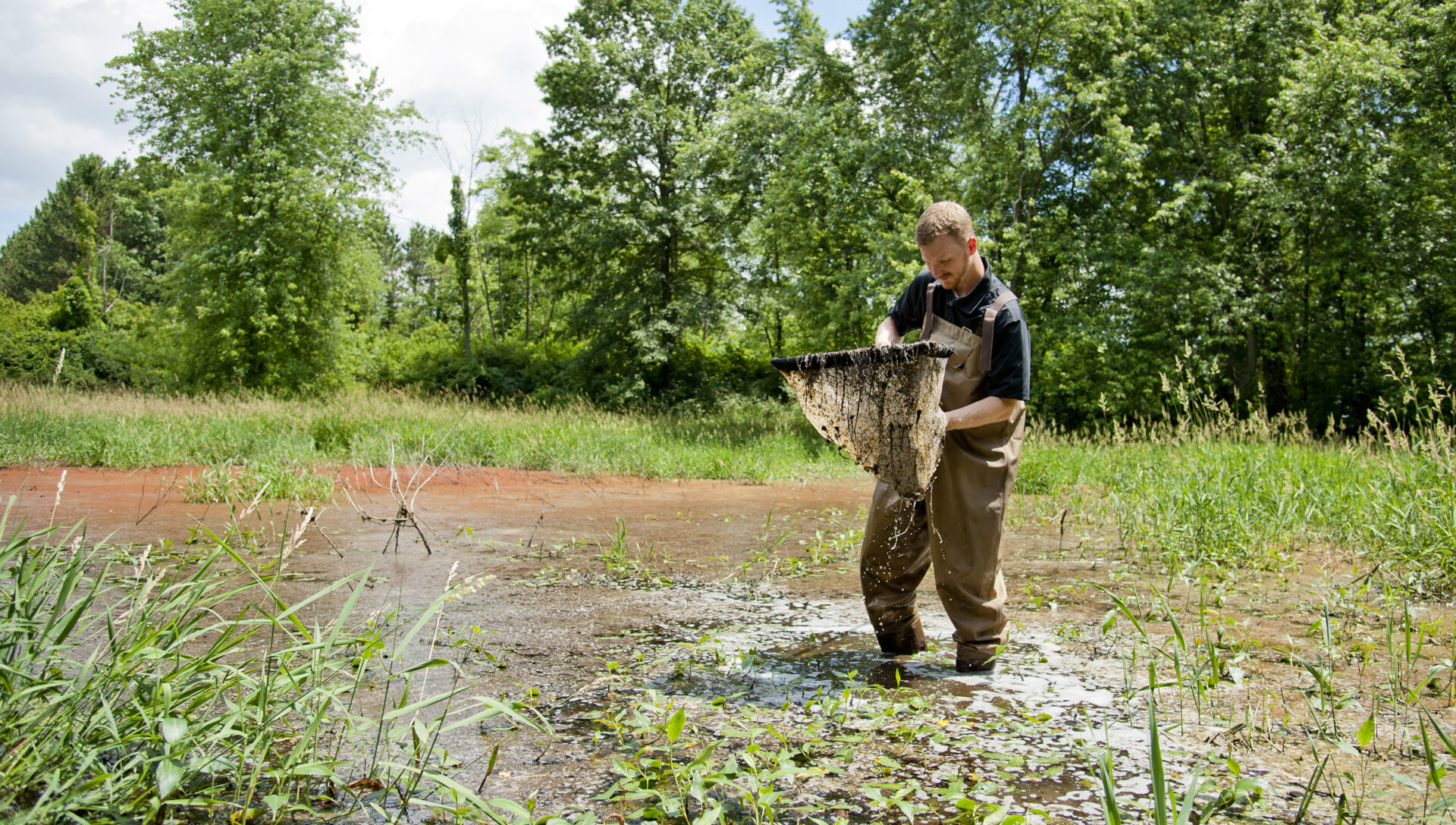Insecticides and stream macroinvertebrates
In a landscape that is increasingly managed by chemical pesticides, rivers and streams receive a lot of unintended contaminants. In order to understand the impact of these pesticide inputs, we investigate how these chemicals impact organisms directly through lethal and sublethal effects, and indirectly as they shift community dynamics to more tolerant species. We also seek to investigate how the impacts of pesticides might change over time, as organisms adapt or communities shift in response to selection pressure caused by pesticides.
Part of this effort is in collecting common heptageniid mayflies from different populations across the state of Indiana to see how pesticide tolerance varies spatially. We’ve investigated how different concentrations and potential exposure patterns effect mayflies to best understand which conditions produce the strongest effects. Adding in predators like larval dobsonflies and southern two-lined salamanders gives us a community perspective on how pesticide impairment might affect predator-prey interactions.
We have also conducted field monitoring of spring and fall pesticide concentrations in landscapes heavily dominated by corn and soybean agriculture, which are crops commonly treated with neonicotinoid insecticides. This allows us to connect our laboratory bioassays to the environmentally relevant concentrations of insecticides in a stream. This work helps us to understand the impacts of pesticides on stream organisms at the species- and community-level in real-world situations.
Representative publications
Rackliffe, DR and JT Hoverman. 2022. Population-level variation in pesticide tolerance predicts survival under field conditions in mayflies. Ecotoxicology. 10:1477-1484.
Rackliffe, DR and JT Hoverman. 2022. Exposure to clothianidin and predators increases mortality for Heptageniidae. Aquatic Toxicology. 31:1477-1484.
Rackliffe, DR and JT Hoverman. 2020. Population-level variation in neonicotinoid tolerance in nymphs of the Heptageniidae, Environmental Pollution. 265:114803.




